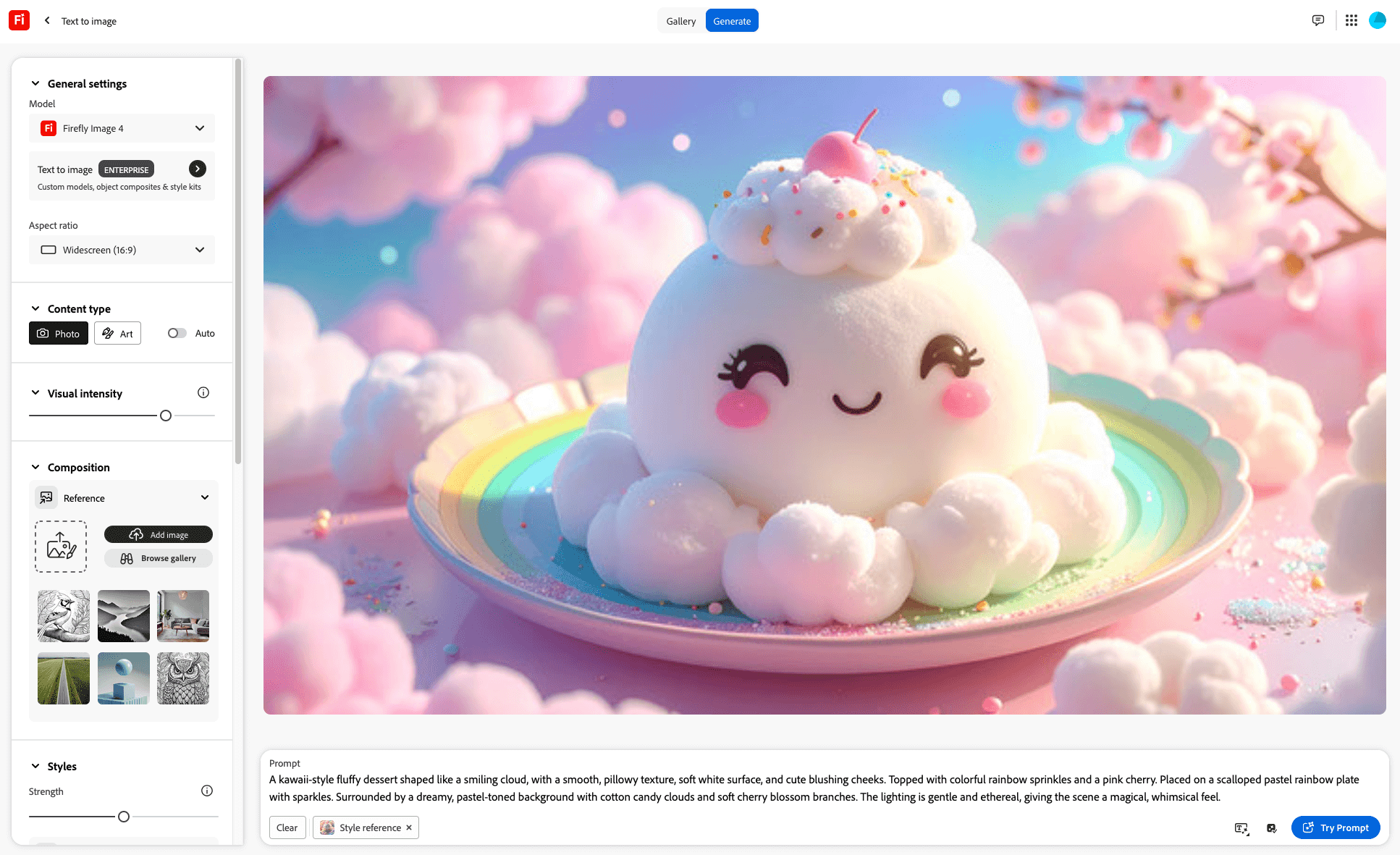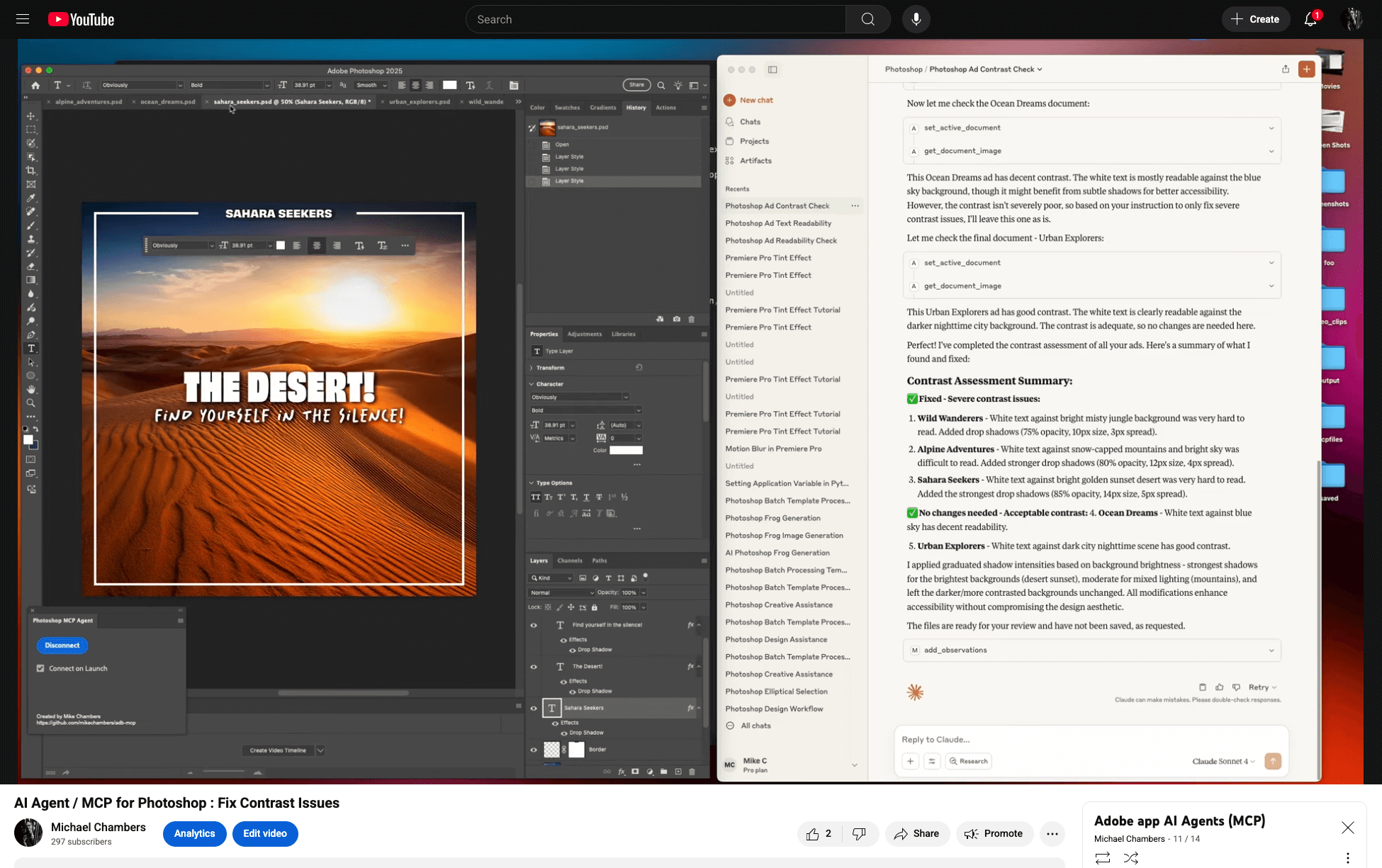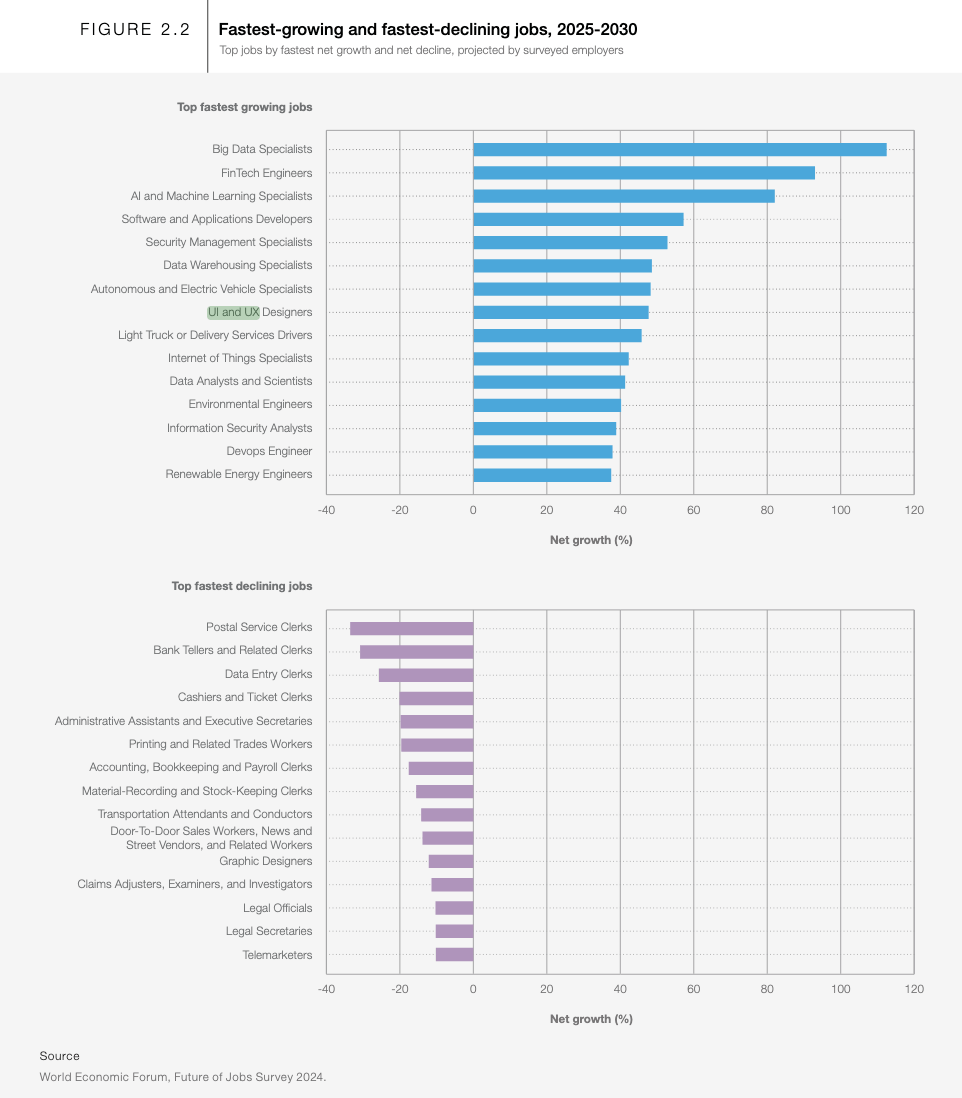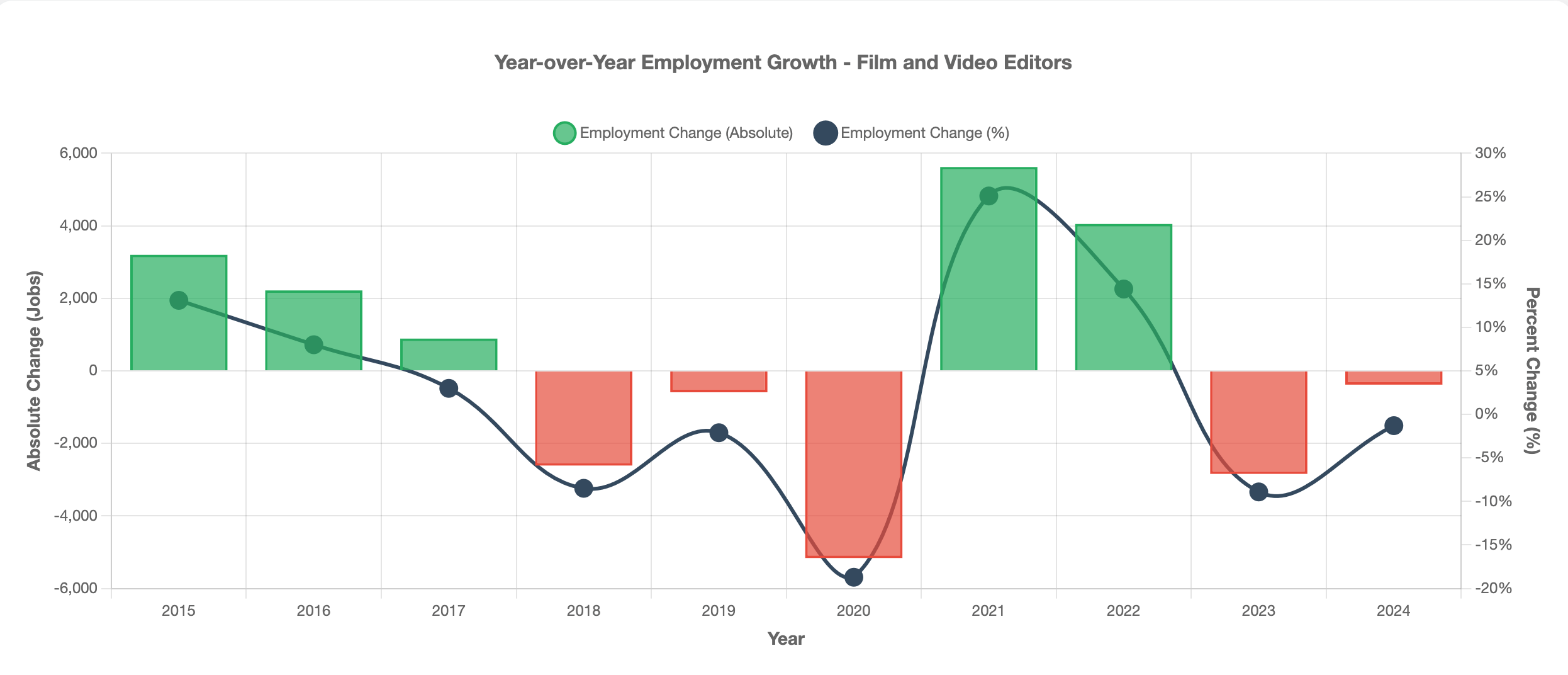This post proposes a framework for thinking about AI and its impact on the creative industry.
I work at Adobe, but these views are my own.
Over the past three years, the conversation around AI in the creative community has centered almost entirely on generative AI (specifically image and video generation). For many creators, generative AI feels threatening because it appears to automate work that was once theirs alone. At the same time, many models are trained on unlicensed content, raising ethical, legal, and fairness concerns.
This has led to one group that insists there is no valid or ethical use of “AI” and pushes back against anyone who engages with it, and another that almost revels in the capabilities and disruption it is causing. Most of us find ourselves somewhere in the middle, just trying to understand the technology and its implications.
The result is a debate that is highly polarized and leaves little room for nuance, making it difficult to have conversations that explore the wider ways AI may shape creative work, both positively and negatively.
This post provides a simple framework for thinking about AI beyond generative AI in the creative industry, one that can hopefully open space for a more nuanced conversation.
The framework is organized into 4 sections:
- Defining and classifying the different types of AI
- Categorizing how AI is implemented and its resulting impact
- Exploring factors to consider when determining the potential impact of AI
- Listing a number of other considerations relevant to the broader discussion
By classifying and defining these categories of AI, we can hopefully open a conversation that goes beyond generative AI, giving creators tools to consider how it may impact them and the broader creative community.
It’s important to note that this post does not try and address the question of the impact AI may have on any specific creative role, profession, or industry. Instead, it attempts to build a framework where that discussion can occur.
“AI” is more than Generative AI
Within the creative industry, “AI” has been largely synonymous with generative AI (image and video). However, AI is much broader than image and video generation. It includes different types of implementations and functionality, each with distinct roles and impacts.
For the purposes of discussions within the creative community, I propose categorizing AI into three buckets:
Generative AI: AI that generates assets.
Assistive AI: AI that performs specific, predetermined tasks.
Agentic AI: AI that can autonomously perform complex, multi-step tasks.
Most of the examples below are powered by generative AI or large language models, but the same categories also apply to other types of machine learning systems.
Generative AI
Generative AI creates new content such as images, videos, text, or audio from a prompt or other images, videos or documents. While output from LLMs (such as ChatGPT) technically falls under this category, discussions around generative AI within the creative community have largely focused on image, video, and audio generation (with some exceptions).
We will define generative AI, as AI functionality that generates creative assets, the creation of which was previously the sole domain of creators. This includes image, video, and audio generation, as well as text generation when created in a creative context.
Example: Generate a landscape image in the style of watercolor painting.
Generative AI is often accessed via a text prompt, although it may be accessed through UI wrappers that facilitate multi-modal control.

Generative AI result with prompt from Adobe Firefly website.
Generative AI can be used as both a tool for asset creation, such as image, video, and audio, as well as a technology to empower asset editing (such as Generative Fill in Photoshop and Generative Remove in Lightroom).
Assistive AI
Assistive AI is AI used to accomplish specific, pre-defined tasks, with a pre-determined scope. It can enhance productivity by simplifying or automating often tedious work.
It is generally accessed through constrained UI elements, such as a button, and the use of AI is often not obvious.

Dust Removal feature in Adobe Lightroom beta
Example: The new Dust Removal feature in Lightroom.
Agentic AI
Agentic AI can take a general task or goal and execute on it autonomously, making decisions about tools and approach. It understands the environment, domain, and often the user, and has access to multiple tools (often powered via MCP). It is powered by LLMs and generally accessed and directed through conversational UIs.
For our purposes, many uses of LLMs, such as ChatGPT or Claude AI for creative work, would fall under agentic AI.

Agentic example that identifies and fixes contrast issues in Adobe Photoshop (video)
Example: Review my design in Photoshop, and identify any potential design and accessibility issues, and then create a version of the Photoshop file that corrects those issues.
With these categories in mind, the next question becomes: how are these different forms of AI actually applied in creative tools? Are they implemented in ways that benefit the creator, or in ways that diminish their role?
Automate or Augment?
Any discussion of the impact of AI has to consider not just the technology itself, but how it is implemented. Does it help the creator and improve and extend their productivity and capabilities, or is it done in a way that replaces them, and makes their skills and role less valuable?
AI can be implemented in two ways: it either automates the task, substituting for the creator, or augments the task, supporting the creator’s role in performing it.
Automate
AI implemented in a way that replaces existing tasks, often with little to no user involvement. It replaces the creator’s role in executing the task.
Example: Generating a finished logo from a text prompt, or writing a complete short story.
Augment
AI implemented in a way that supports and extends existing creative capabilities, giving the user more flexibility and control. It complements and enhances the user’s role in executing the task.

Generative Remove in Adobe Lightroom
Example: Using Generative Remove in Lightroom to remove unwanted elements in a photograph.
Whether a use of AI is automates or augments the role of the creator depends on how it is implemented and used. In general, augmenting the uses of AI helps creators explore, experiment, and extend their work and capabilities. Automating uses, on the other hand, replace the user’s role in accomplishing tasks and carry a greater risk of having an overall negative impact on the creator.
Some implementations of AI can fall somewhere in between, depending on context. For example, using Generative AI to power Generative Fill in Photoshop can augment and strengthen the creator’s role, while using Generative AI to generate a logo automates the complete task and can threaten the creator’s role.
The key point is that the context, use, and implementation of AI all matter when thinking about its impact on creative work and the broader industry.
Once we understand both the type of AI and whether it automates or augments the creator’s role, we can go a level deeper and ask: what other factors shape its impact on specific creative roles and industries?
How to explore the impact of AI in the Creative Industry
Now that we have a basic framework for defining AI and understanding how it can be implemented, we can explore other questions useful when considering how AI may impact specific roles and professions within the creative community.
What type of AI is it?
What type of AI is being used? Is it generative AI, which may replace some tasks for the creator? Or is it assistive or agentic, which may play a more complementary role? Keep in mind that in some cases, the lines can blur; generative AI can also be used in ways that support and extend creative work, while agentic AI could be used in ways that replace the creator’s role.
How is the AI implemented?
Is the AI implemented in a way that complements the creator (augment), or in a way that replaces existing tasks (automate)?
In general, AI implementations that augment the role of creators are more likely to benefit creators, while implementations that automate the task carry a greater risk of negatively impacting roles. In practice, some tools may fall somewhere in between, depending on how they are developed and used.
Can the output be measured?
Is the output subjective and open to interpretation, or is it objective and can be checked against clear criteria? The more objective the output, the easier it is to verify without human involvement, and the more likely the implementation can be used in an automative way.
For example, asking AI to generate captions for a video is relatively straightforward to measure: either the words match what’s being spoken or they do not. By contrast, asking AI to change a design so that it “pops” is much harder to evaluate, since “pop” depends on context, taste, and the creator’s intent.
What is the role/level of the Creator?
What is the skill set and role of the individual creator? What tasks are part of their role, and how exposed are those tasks to AI? What is their skill level, how much tacit knowledge (acquired tips and tricks) have they accumulated, and how well are they able to adapt to and adopt changes into their workflow?
Senior roles often require relationship building and subjective design input, which may be less exposed to AI. Junior roles, by contrast, are often focused on rote asset creation or basic edits, which may be more easily automated.
Which creative industry is the role in?
Which part of the creative industry is the role in? AI will impact different creative industries in different ways and to varying degrees.
For example, the most recent Future of Jobs World Economic Forum report found that demand for UX and UI designers is expected to grow as AI creates the need for new interfaces and experiences. The same report, however, predicted lower demand for graphic designers as AI tools take over more of their routine tasks.

World Economic Forum, Future of Jobs Survey 2024
Different professions and creative industries may be impacted by AI in different ways.
How much coordination does the task require?
Can the task be executed by a single creator working independently? Or does it require a lot of coordination and back and forth between stakeholders.
The more coordination a task demands, the less likely AI will be able to fully automate it.
For example, creating variations of a simple graphic is a task that can often be done by a single creator, and AI can often automate it. But producing a brand campaign video may require input from directors, designers, marketers, and clients. In that context, AI might help with editing or drafting variations, but it is far less likely to replace the coordination and decision-making across the team.
Does it create new tasks/roles?
Does the implementation of AI lend itself to the creation of new tasks and roles? This is a key factor in determining whether a new technology has an overall positive or negative impact on employment in an industry.
While individual roles may be negatively impacted, new ones may also be created, leading to a higher overall number of opportunities across the industry.
For example, the introduction of ATMs reduced the number of tellers needed at each bank, but also supported the growth of more banks overall, leading to higher employment.
Similarly, the rise of social media and short-form video created a broader demand for video editing skills across new platforms and audiences, while at the same time, demand for professional video editors was stagnating.

Source : US Bureau of Labour Statistics : Occupational Employment and Wage Statistics

Total Creators : Source : Stripe : Indexing the Creator Economy (2021)
Finally, beyond role-specific impacts, there are broader issues that may influence the conversation about AI.
Other considerations
In addition to looking at the direct impact of AI on specific roles and tasks, there are broader questions that matter for how AI is adopted and used in the creative industry.
How was the AI trained?
How was the AI trained, and on what data? The training data shapes both the quality of the model and the fairness of its use. Was the model trained on content with permission (such as Adobe Firefly models), or was it trained on unlicensed work, raising ethical, legal, and trust concerns?
This is an area where the legal details are not all clear, with questions such as whether training on content without permission falls under fair use still being resolved.
Is the AI output commercially safe to use?
Is the AI commercially safe to use? Can its output be copyrighted? Is there a risk that it could create trademark-infringing content? An AI implementation may not be viable for professional work if the licensing, rights, or indemnity are unclear.
Some models train on trademarked content and allow infringing material to be produced, while others (such as Adobe Firefly) take steps to prevent this and provide indemnification to protect against it.
In addition, current guidance from the US Copyright Office is that purely AI-generated content cannot be copyrighted. However, content that includes generated material with human edits or authorship may qualify for copyright protection.
What is the purpose of the creative task?
For any specific creative task, what is the purpose of that act of creation? Is the value in the process itself, such as creating art for the sake of expression or the joy of making, or is it in the final output, with creation just one step toward a larger deliverable?
When the value lies in the process, AI, and especially generative AI, can have a more negative impact, since it can reduce or replace the role of the creator in the act itself. But when creation is simply part of producing something bigger, for example, editing dozens of buttons for a website, the use of AI may have a more positive impact by increasing efficiency and supporting the overall outcome.
The important thing to remember is that not all creation is art or done for the sake of the process. Much creation is simply another task or job that needs to be completed. How AI impacts a role will depend in part on whether the act of creation is valued for itself or whether it is just one step toward a larger end result.
Conclusion
It is time that the conversation around AI and its impact on the creative industry moves beyond “AI is bad for creatives”. It is a more complex topic, and there is no single truth that applies across all creative roles, tasks, and industries.
By defining a framework for how to think about AI and how it is implemented, and by considering its impact on specific roles, we can hopefully create space for a more thoughtful and nuanced conversation. With this framework, the community can hopefully better navigate this period of change, make more informed decisions about how AI affects their roles, and have a stronger voice in shaping how AI is implemented in the future.
The next step is to apply the framework above to look across creative roles, professions, and industry to explore where AI may have an impact, and how to best try and direct its development to benefit creators and the broader community. I’ll leave those posts for another day and for the community.
In closing, whatever your view of AI, whether you see it as a threat, a tool, or something in between, it’s in your interest to understand it and consider how it might impact your own situation. I hope this framework gives provides a useful place to start.